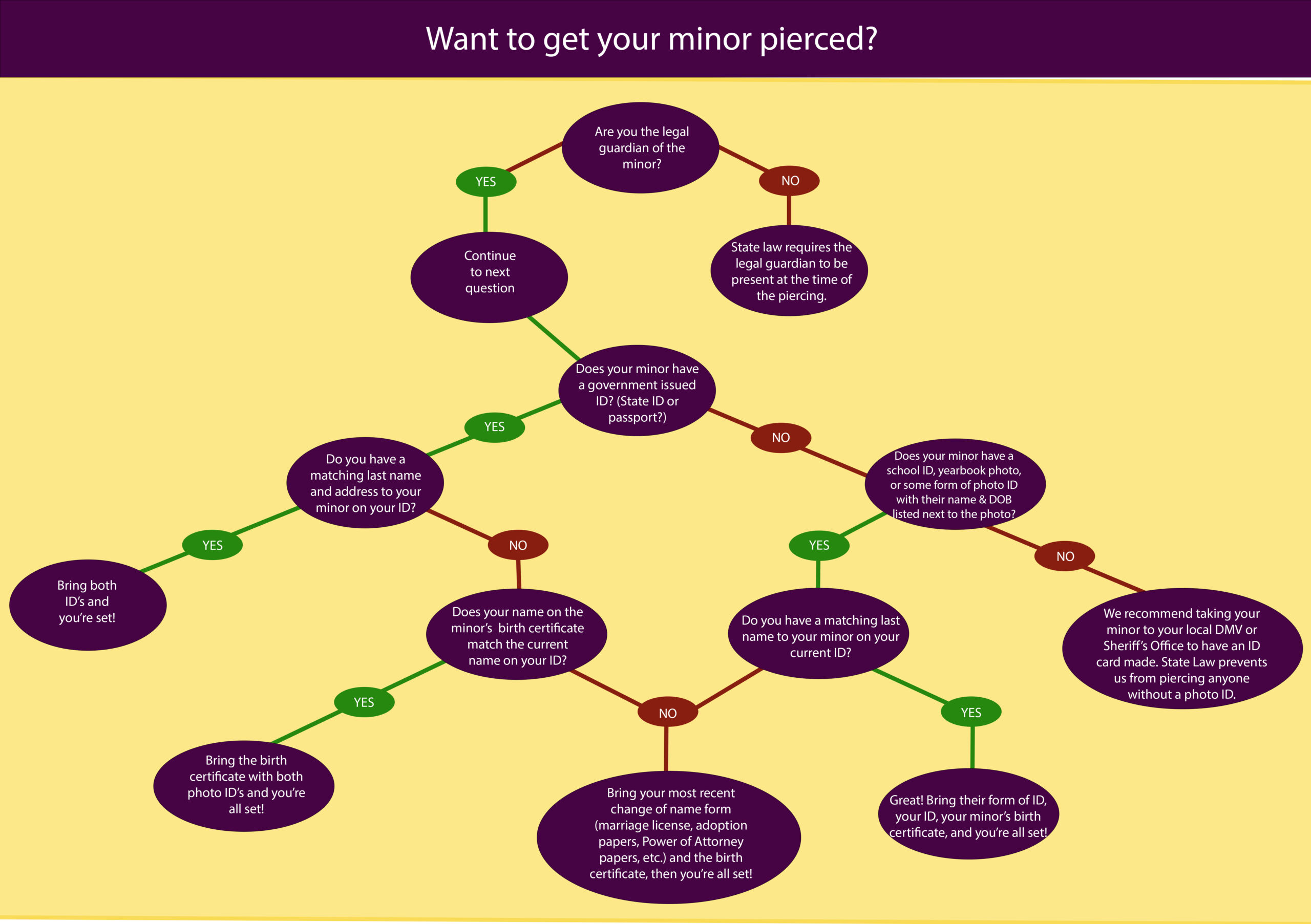
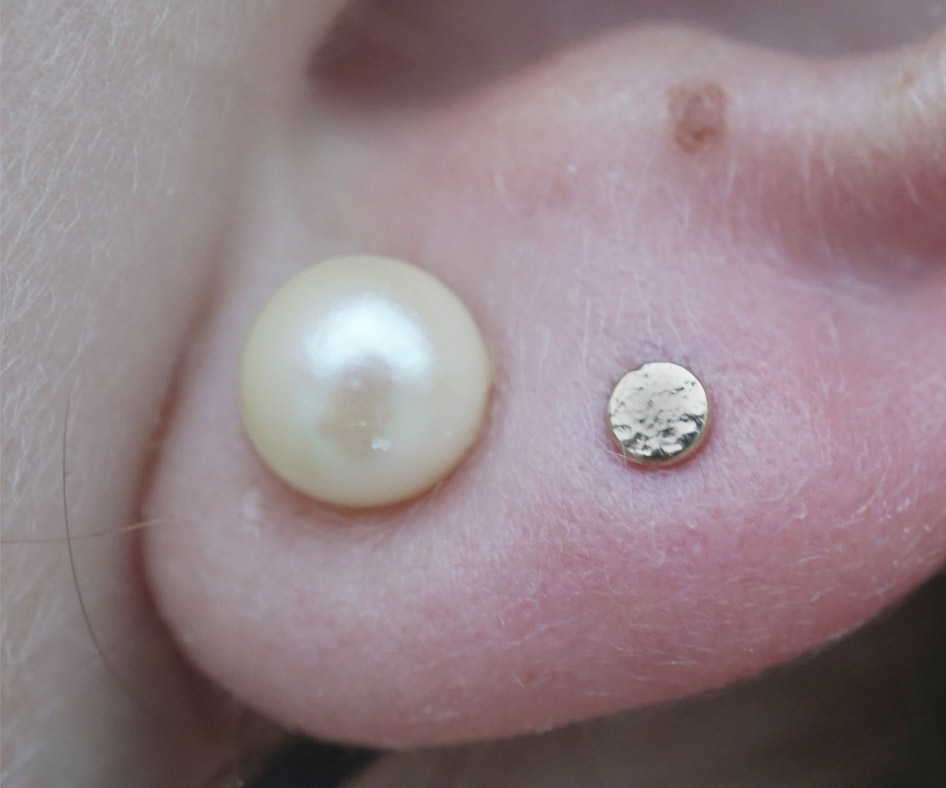
1. Your Child Needs to be Able to Sit Very Still During the Procedure.
This is to ensure both the safety of our piercers, and your child. A wiggly child can result in a needle stick, which can be very harmful for everyone involved. It can result in the transmission of blood-borne pathogens, hospitalization and a lifetime of illness. We need to eliminate possible needle sticks at all times.
2. Your Child Needs to Understand that They Have to Care for Their Piercing DAILY for Several Weeks.
We recommend a two step, daily aftercare routine for the first 6-8 weeks after getting your ear lobes pierced. (See this section for aftercare) This is to ensure the piercings heal well, and that they will not be irritated, extending the healing time or possibly become infected.
In addition, we recommend all clients to not submerge their fresh piercings in any bodies of water such as lakes, rivers, pools, and baths. This is to prevent introducing bacteria, and chemicals like chlorine that can lead to drying out, clogging, and irritation of the piercing thus extending the healing time, or lead to a possible infection.
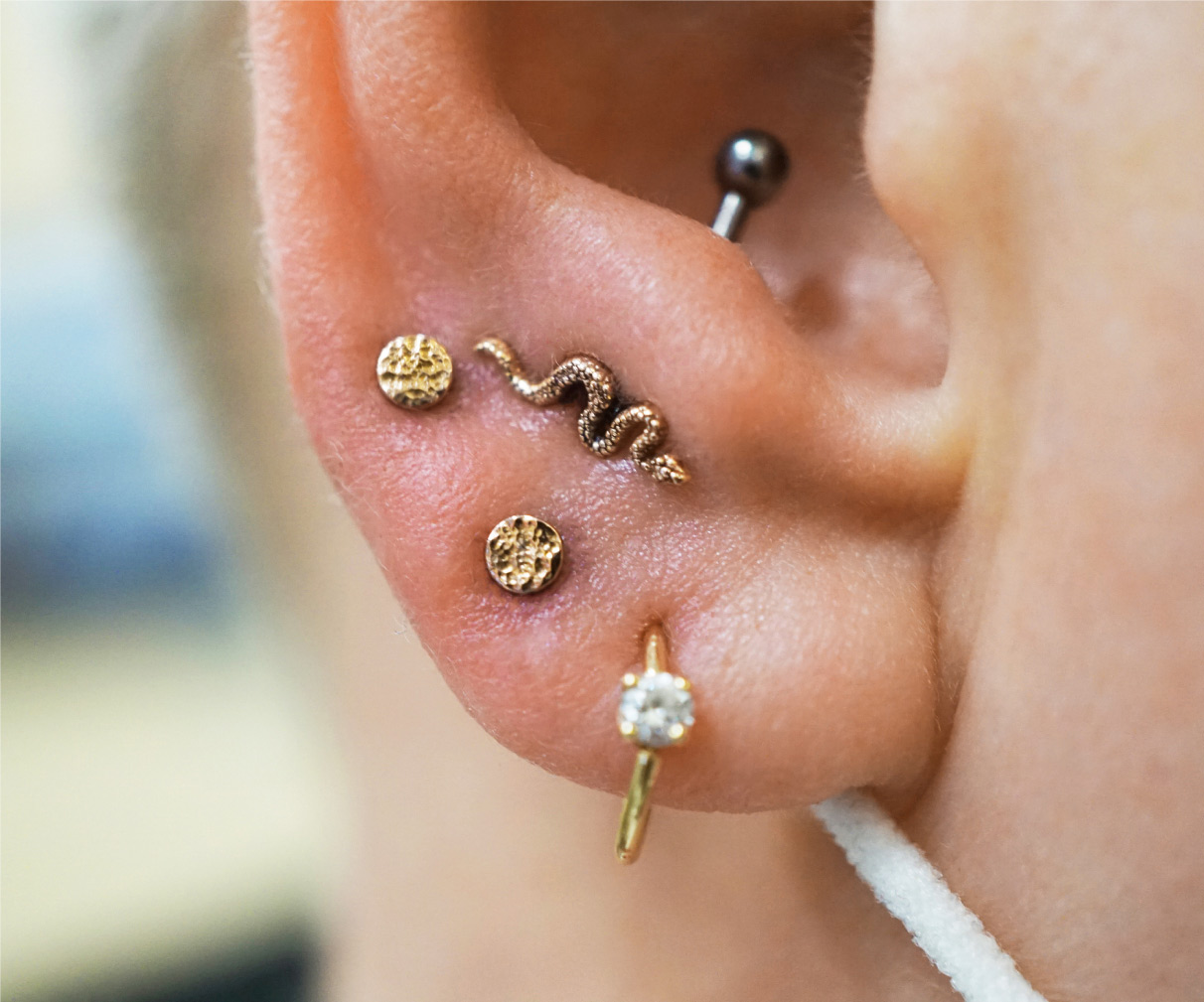
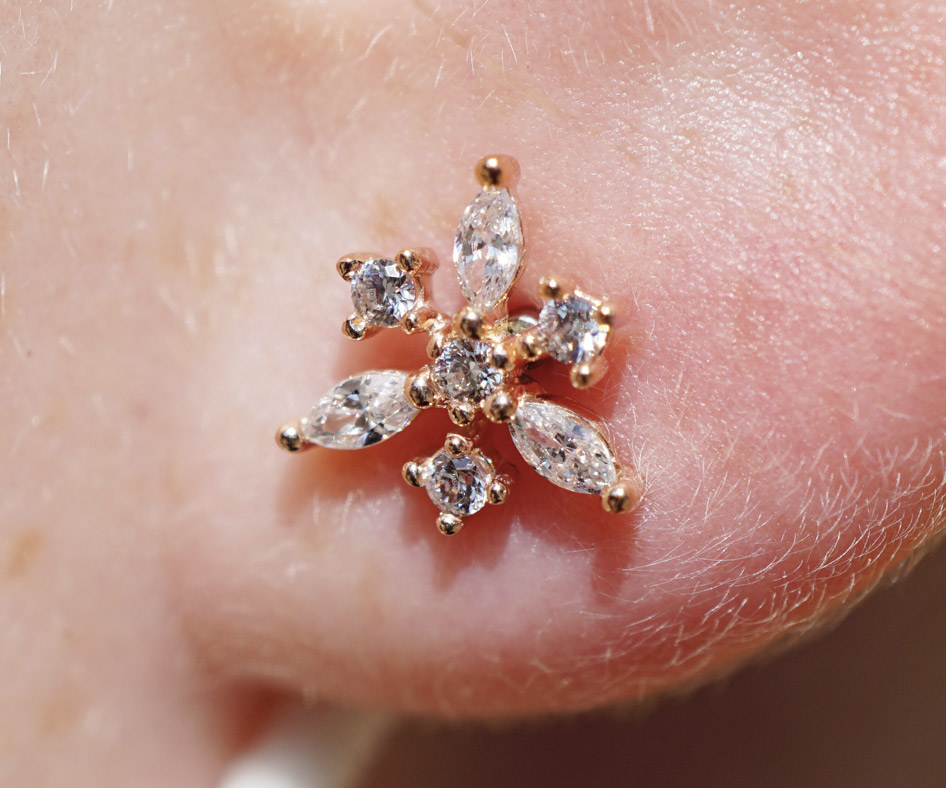
3. Your Child Needs to Understand They Cannot Touch Their Piercing, Aside from When They Clean It.
Children have their hands on everything, it’s what kids do… If they are constantly touching their piercing with unclean hands, this increases their risk of infection by introducing bacteria to an open wound. We do not want them touching their piercing aside from when they have clean hands, or are cleaning it.
4. Your Body Is Still Changing When You’re Young, Even Your Earlobes.
One of the reasons why we don’t like to pierce younger than 5 years old, is because your child is still growing, yes, even their earlobes! What might be the correct placement on their ears now, might not be the correct placement later on in life. They may end up being uneven or mismatched as their earlobes grow.
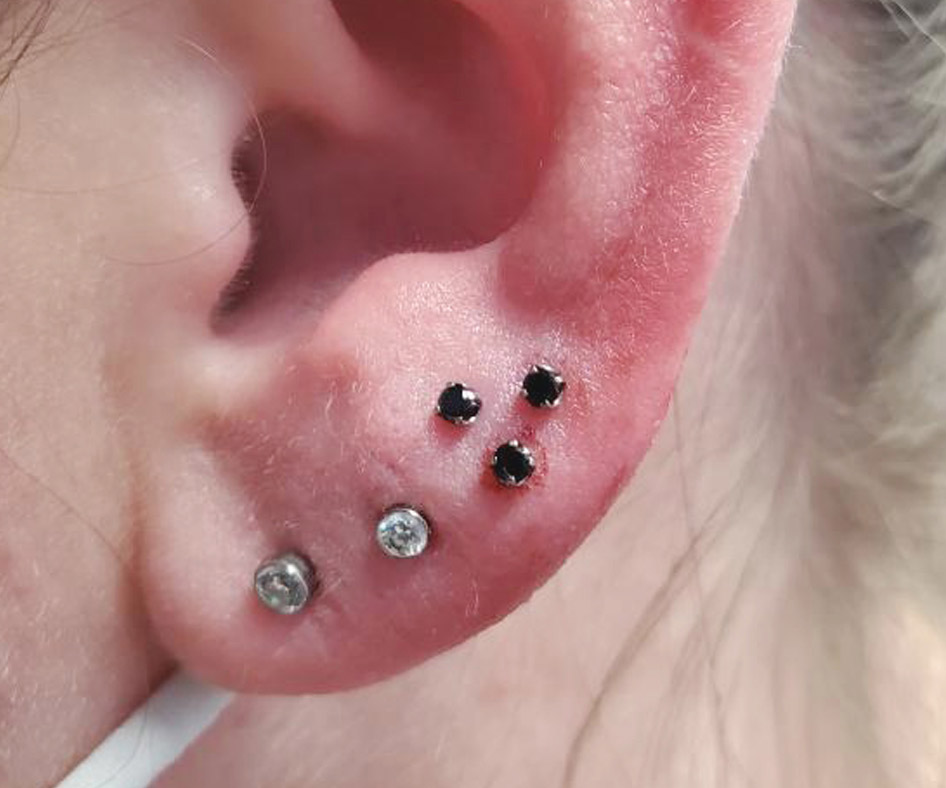
We understand that you may consider going elsewhere for your child’s ear piercings. There are reasons why going somewhere that uses a piercing gun is not what is best for the health and safety of your child. These include:
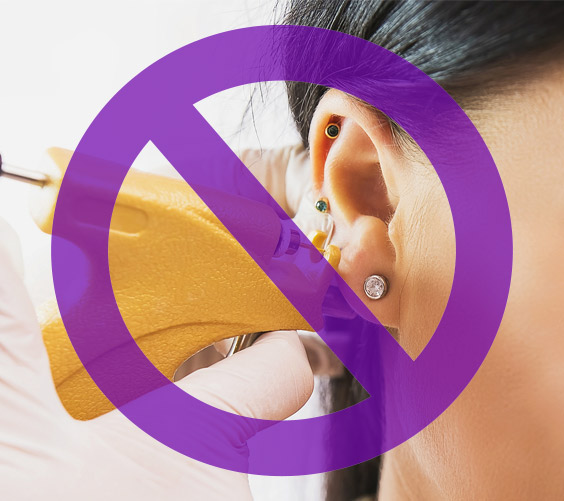
There is no way to sterilize piercing guns. Most guns are made of plastic and will melt under the extreme heat and pressure of an autoclave (the piece of equipment used to sterilize implements) and chemical sterilization has not been proven to kill all blood borne pathogens.This is extremely dangerous since fluid micro-spray (microscopic particles of tissue, blood and other body fluids) might be present on the gun after a piercing.
Second, piercing guns are considerably more painful than a piercing needle because you are essentially forcing a blunt object through flesh – which tears the skin, traumatizes the area, and causes excess swelling and can complicate healing.
Third, since both the instrument and the jewelry were designed for earlobes, they are not compatible with other areas of the body, increasing the risk of infection and further complicating the healing process.
Lastly, the jewelry is poorly designed in that the backing traps and collects waste, hair and debris, holding it against or close to the piercing. This is far from an ideal healing environment.
Plated jewelry, and low quality jewelry that you purchase from retail stores are not body safe. Only implant grade material should ever be worn in the body. Low quality jewelry is not ideal for piercings, for many reasons, including:
- Poor surface finish: Low quality jewelry typically has small pits on the surface of the jewelry, due to poor polishing. When inserted into a fresh piercing, your healing skin can actually adhere to the surface of the jewelry – one of the reasons why people who pierce with guns tell you to twist and turn your jewelry; so your skin does not become stuck to it. – our aftercare specifically tells you not to twist and turn your jewelry because this can impede the healing process due to unnecessary irritation and excess friction within the fistula (tube of skin within the piercing) .
As well, the poor surface finish may also harbor bacteria, which can prolong the healing and cause infection. - Higher nickel content: Low-quality jewelry usually contains higher amounts of nickel, which can leech into your body and cause allergic reaction over prolonged periods of time. This is why children, and adults now, are usually unable to wear “cheap” earrings made of ‘sterling silver’, or ‘surgical steel’ – both of which are not body-safe, nor certified-grade metals.
- Butterfly backs: can trap bacteria, hair, and skin; and holds it close to the piercing site. Impeding and complicating the healing process. As well, those really hurt to lay on! Ouch!
Everyone’s bodies are different – no two ears are alike. This means that the ‘one size fits all’ styles of jewelry that are purchased from retail stores will not fit everyone’s bodies.
When creating a new piercing site; your tissue is going to swell to some extent. Putting in a piece of jewelry that is improperly sized to your child’s (or your) body, can cause the jewelry to swell over top of the jewelry, and become embedded and trapped inside the body. This typically requires some form of extraction, and is completely avoidable with properly fitted jewelry.
Be sure to visit our Jewelry section of the website to read more on the benefits of investing in high-quality jewelry, and the FAQ‘s to read about what type of documentation you need to bring to get your little one’s ears pierced.
For aftercare information, click here.

